On Tuesday morning we awoke to a cloudy Echuca. A real weather change in 12 hours! There was even a few raindrops by the time we left at 9.00am.
We decided to take a different route to Bendigo. It was about 80 kilometres further to travel some smaller country roads. Friend Jenny Mac had made me aware of a German War Cemetery in Tatura. There had been POW Camps in Tatura, in which some of the German personnel from the Kormoran had been held. So we decided to travel that way for a look. It was good to have a reason to travel a different route. We really did get a good look at so much more of the countryside and we all agreed what an interesting morning it turned out to be.
We went back towards Wyuna, before we turned south to the small town of Tongala. In hindsight we should have stopped at Tongala, but it was drizzling rain and a little early for morning tea. So it was just a couple of snaps as we passed through. There is a large Nestle's Milk factory at Tongala. In 2012, $17 million was invested into the factory to expand the factory and open a new liquid manufacturing unit. The factory has been transformed into a state-of-the-art facility for Nestlé’s Health Sciences business as a manufacturing hub for Oceania, Asia, Middle East and Africa. It manufactures Nestlé Health Science’s hospital-grade ready to drink liquid supplements such as Resource, Isosource and tube feeding solutions for sick people who are unable to consume normal food. The factory also produces Nestlé evaporated and condensed milks and a number of products from the Maggi range. We had actually passed a large dairy farm just before Tongala and the cows were going back to the paddock, via the tunnel under the road. Pete pointed out the fact that many of the pasture paddocks were small strip paddocks, separated with electric fencing for control grazing.
We travelled through Kyabram and then further south east to Tatura. Tatura is approximately 20 kilometres west of Shepparton. We were in the heart of the Goulburn Valley and there were many stone fruit trees covered in blossom. We stopped on the edge of the town of Tatura at Cussen Park for morning tea. Cussen Park was originally farm land and in 1983 a small area was developed as parkland, naming it in honour of the first Rodney Shire President 'Martin Cussen'. Within ten years the area had become an eyesore and the Shire decided to rezone for residential development. The community objected to the proposal, formed a committee in 1993, with the result that significant infrastructure has been installed. There are bird hides, a board walk, viewing platform and water monitoring is undertaken. A website has been developed for the park and there was QR Codes on the signage. It was good to be able to read the community story. That wasn't QR coded, but the use of this technology is definitely the way of the future.
Then it was time to find the German War Cemetery. It was a few kilometres from the town and is registered by the Heritage Council of Victoria. It is the first Foreign War Cemetery established in Australia. Those who died in the Tatura camps during the war were buried here. After the war the War Graves Commission wrote to relatives of Germans who died in other camps around Australia, seeking permission to disinter their remains and bury them at Tatura in an official war cemetery. All but 27 accepted the offer and the Australian German War Cemetery in Tatura is now their resting place. The German War Cemetery contains the graves of 191 World War I and 59 World War II internees, including 11 prisoners of war. Each grave is marked by a small masonry headstone with a bronze plaque and an iron cross to identify prisoners of war and Latin cross for civilians. The 'Iron Cross' dates back to 1813 and was commissioned as the first military decoration open to all ranks, including enlisted men.
Off then to Bendigo, travelling the Midland Highway. It was obvious this region grew a great deal of hay. Peter had not long made a comment about the fact they must be growing it for export, when we came across a huge number of sheds and facilities to compress the hay, as they do to export. The weather had deteriorated further by the time we arrived at the Gold Rush G Day Caravan Park at Epsom, seven kilometres from the CBD of Bendigo. We decided against doing anything further for the day, hoping that the weather would improve for sightseeing on Wednesday. We did have a drink together in the camp kitchen with the heater turned on. It was a miserable cold afternoon. I think Bendigo only ended up with about 4 mls of rain. It was too cold to rain much!
Wednesday was sunny, but the wind was freezing. We rugged up and headed into the CBD for a day for sight seeing. The following is how we filled in our day. We came back to the vans satisfied that we had provided ourselves with a reasonable insight into what Bendigo has to offer the tourist.
We parked at the Hargreaves Street multi-storey carpark which cost us $8.00 for the day. We found a cafe in the Mall to have a coffee and a toastie and John talked with a Council worker and came back and told us the quartz eggs in the centre of the rocks in the mall, represented dragons eggs! There were very faint dragon footprints in the paving of the Mall and a 'Dragon Playground' at the end of the Mall. It was all to do with the very popular Chinese Dragon Festival held at Easter each year. More about this festival later in the blog.
We purchased our 'Talking Tram' ticket from the Information Centre. I actually thought the 'Talking Tram' wasn't as good as it is promoted. It was okay, but it does only take one hour to do the circuit and the brochure suggests you might like to buy a two day ticket! The ten minute stop at the Tram Depot was long enough to take a few photos and have a look around. You didn't need to stay longer and catch the next tram. At times during the day you can catch the Number 19 Gold Mine Tram, otherwise you have to wait an hour. You can stop at Lake Weeroona. But it would appear not many people do! We were asked to put our hand up if we wanted to get off....and we were too slow. It was too cold for a walk around the lake anyway. In 1876 Lake Weeroona was created by the Sandhurst Council, which was the original name of Bendigo. 45 acres of land was set aside for the building of a lake for boating and recreational activities. At the time it cost 10,000 pounds to construct and was opened to the public in 1878.
From the tram we saw St Kilian's Church. This church is one of the largest timber churches in the Southern Hemisphere. It was here that a German Catholic priest, the first permanent clergyman on the Bendigo diggings, originally pitched his tent chapel in 1852.
The tram goes as far as the Chines Joss House to the north. We got onto the tram in the centre of the CBD at Charing Cross. From the Chinese Joss House stop, we came back along the track and out to the southern end, where the Central Deborah Gold Mine is. None of us wanted to do the mine tour, so we came back to the Charing Cross stop and were satisfied with out 'Talking Tram' ride. Charing Cross is on the street of Pall Mall. It did seem like we were in the UK or maybe even on the Monopoly Board! There are 45 trams in Bendigo and they are Australia's oldest fleet. The depot was completed in 1903 for the operation of electric trams, but the first depot was constructed in 1890 near the railway station.
We felt by walking the 'Rosalind Park' area within the CBD area, we got a feel for the history of Bendigo. Rosaland Park is the valley that became a crazy jumble of shallow shafts, mullock heaps and paddling mills, when gold was discovered in Bendigo in 1851. 700,000 kgs of gold was mined in Bendigo between 1850 and 1900, making it the richest city in the world at the time. The original mining area has been transformed into the most beautiful park and the tulips were flowering. In Bendigo the gardeners had planted single stocks in some of the tulip beds and they did look quite stunning.
The Alexandra Fountain was designed by Wilhelm Charles Vahland and is made from Harcourt granite and was opened by HRH Albert Edward Victor of Wales in 1881. It is 8.2 metres high and 16 metres wide. The fountain was restored and reinstated in 2016. There was a monument recognising the architecture of Vahland on the other side of the old Post Office and the Law Courts buildings. Wilhelm Charles Vahland was a German architect who came to Bendigo in search of gold, but instead ended up designing many of Bendigo's finest buildings. The house named 'Vahland House' is believed to have been specifically tailored for Bendigo. It is also written that there are 100 buildings and monuments in Bendigo that have been designed by Vahland.
The Cenotaph near the Alexandra Fountain, was a gift from Sir George Lansell's son. The memorial is a smaller replica of its counterpart in London's Whitehall district. The monument of George Lansell is in appreciation of his indomitable courage and persistent enterprise in the development of Bendigo's Gold Resources. It was erected by the citizens of Bendigo. It is a large monument of George with a lump of quartz in his hand. George arrived in Australia at the age of 30 and invested in many of Bendigo's mines. He became known as 'Bendigo's Quartz King and was one of the richest men of his time.
Thee Soldiers Memorial was completed in 1921, but is currently closed and having a makeover. It will reopen on the 18th November. The total cost of the revitalisation is $4.5 million.
The Shamrock Hotel was restored by the State Government as one of Victoria's most important buildings. The present building was erected in 1897 after the original 1850's building was destroyed by fire. Charles & Diana stayed at the Shamrock Hotel when they visited Bendigo in 1983.
The Myer Store was the first retail store opened by the great retailer Sydney Myer. He opened a store in Bendigo in 1900 and the present store in 1908. Sydney Myer was years ahead of other retailers in offering visually appealing merchandise set in an exciting shopping environment. I couldn't resist a purchase as we passed through the Christmas shop on our way back to the carpark. This was just after Peter took a photo of me with the monument of Queen Victoria. The inscription says; Victoria - 'Queen of the Earthly Queens' - 1837 - 1901. Erected by the Citizens of Bendigo.
The old Bendigo Post Office, with the clock tower is now home to the Information Centre and was built in 1887. When built it was the largest outside Melbourne. The Law Court is a matching building alongside and it opened in 1896. These two buildings are among the most ornate buildings in Australia and are listed with the National Trust.
We also visited the Golden Dragon Museum which is home to Bendigo's famous Chinese Dragon Loong, which is the oldest Imperial Dragon in the world. Sun Loong is also housed in the Museum and it is the longest Imperial Dragon in the world, but we were told another Dragon is being made in Hong Kong and will be here for the Easter Festival in 2019. The Museum also tells the story of the Chinese in Bendigo. There was an Anzac Exhibition on display and the Museum had recently been awarded a prize for the Exhibition on the Chinese soldiers. There are 90,000 hand cut mirrors in the worlds longest Imperial Dragon. The Golden Dragon Museum is the first accredited Chinese museum in Victoria. In the 1890’s an impressive Imperial dragon was purchased from China by the local Chinese. The dragon is now the oldest in the world. The Museum has many artefacts and the display of carved furniture, costumes embroidered with gold bullion thread, date back to the Shang Dynasty 1600-1046BC. The recent donation of artefact from a collector in Adelaide is very exciting for the Museum.
The majority of the Chinese who came to the goldfields in the 1850's originated from Canton Province. The political and economic life in Canton had been shattered by the introduction of opium, European made goods and political rebellion. Many left for Australia as news of the rich gold strikes in Victoria, quickly reached the Canton Province. Many Chinese did succeed and returned home with gold or money, others chose to remain in Victoria, but remitted their earnings to China. During 1857, 205,464 ounces of gold was shipped to Canton. It was from these small beginnings on the goldfields that a vibrant Chinese community developed in Bendigo. By 1860 the average earnings at the diggings had declined and those Chinese that stayed switched from working the diggings to servicing the diggers. Market gardens, eating houses and laundries were developed by the Chinese. Today with the easing of naturalisation and migration laws, the Chinese have become an integral community in Bendigo and are represented in every profession, skill and business. They are welcomed by the Bendigo community and participate in all branches of Bendigo life.
Gasworks were built in Bendigo in 1859 and were in operation for over 100 years. It is the largest coal gas producing plant with horizontal retorts left in Australia. The gasworks closed in 1973 due to the arrival of natural gas. It is looking very tired and an eyesore in the city, so I wonder what the future will be for this old gasworks?
There was just one last thing to see on the way back to the caravan park and that was 'Bendigo Pottery' which was established in 1858. It is Australia's oldest working pottery. What an interesting place that turned out to be. If we ever visit Bendigo again, I am going to make time to visit and have a go at making myself something on the wheel! Every day of the week, from 10.00am until 4.00pm on the hour, you are able to pay to mold a piece of clay. It will be fired for you and sent to your home address about two weeks later. The cost of the freight is $10.00. I think the cost of having a go at turning out your masterpiece is only $15.00 We stood and watched a potter at work. He provided us with a bit of an insight into the daily workings of Bendigo Pottetry, whilst he turned out another bowl on the wheel. It was a great way to finish our day.

 Bendigo, Victoria, Australia
Bendigo, Victoria, Australia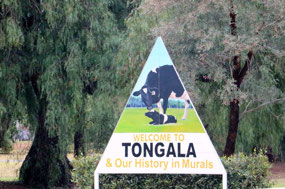
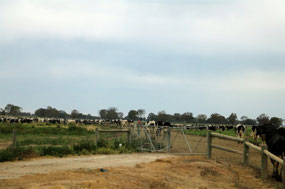
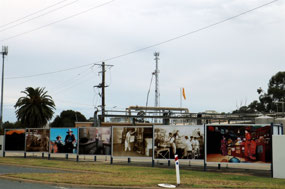
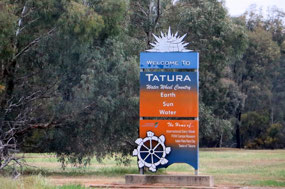
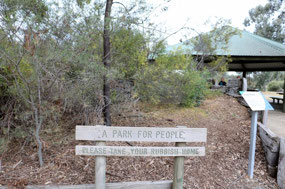
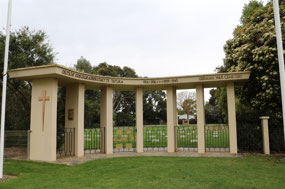
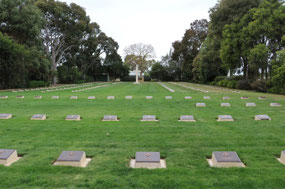
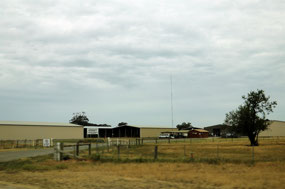
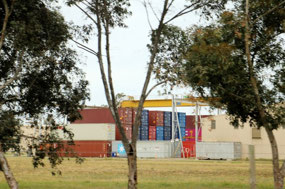
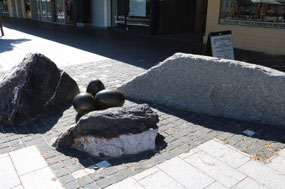
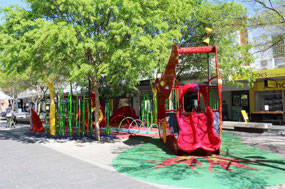
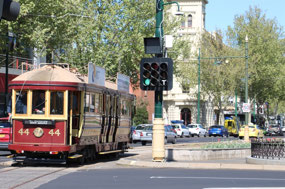
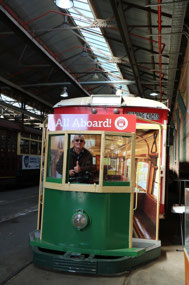
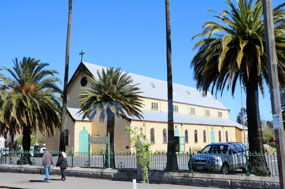
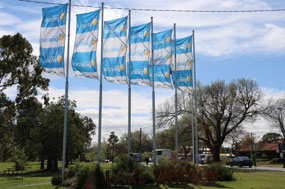
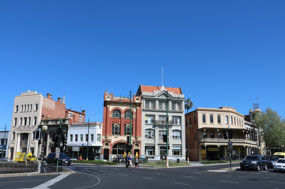
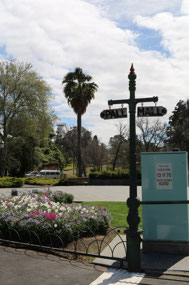
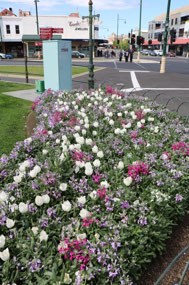
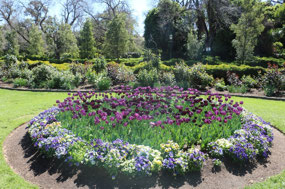
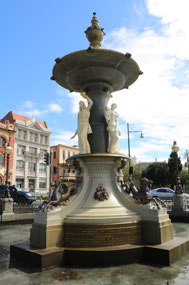
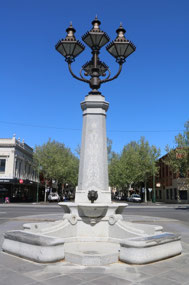
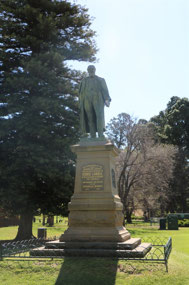
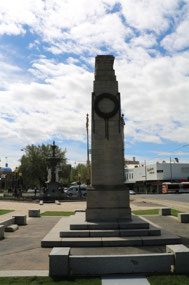
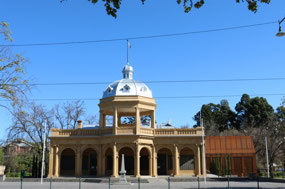
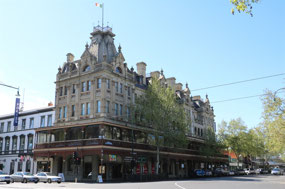
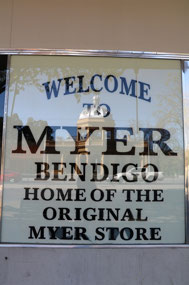
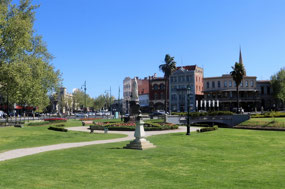
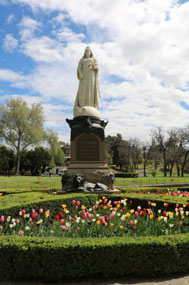
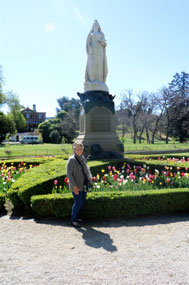
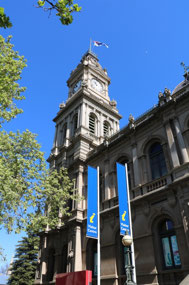
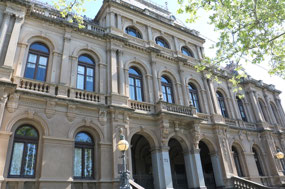
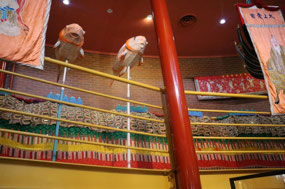
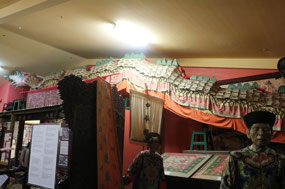
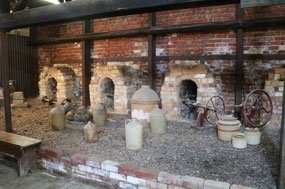
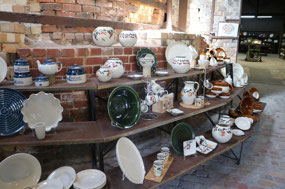
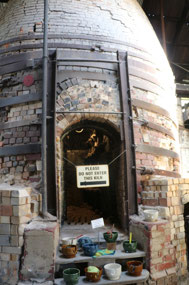
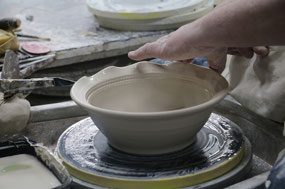

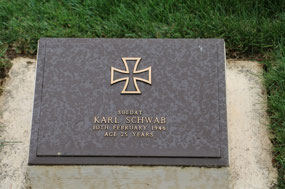
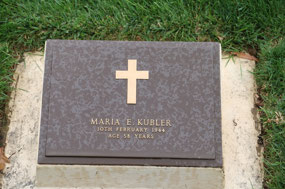

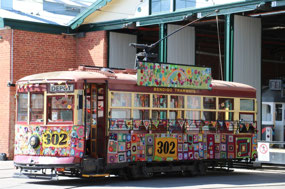
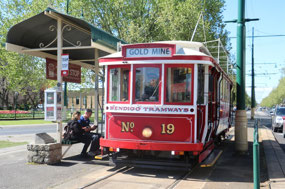
Jenny
2018-10-14
Interesting about the cemetery, I knew the POWs off the HSK Kormoran were imprisoned there after they took out the HMAS Sydney II in 1941. Captain Detmers apparently escaped but was soon captured, so I guess the museum has those stories but an awkward opening time, so I must remember that. Maybe we'll go by that way next time. At least it was some nice countryside.
pamandpete
2018-10-15
I wonder how much info will be at the Museum. We did notice it as we came around the roundabout. It wasn't a very big building. But when you are a tourist, you have to visit to find out! We were glad that we travelled that way. Thanks for the tourist tip.